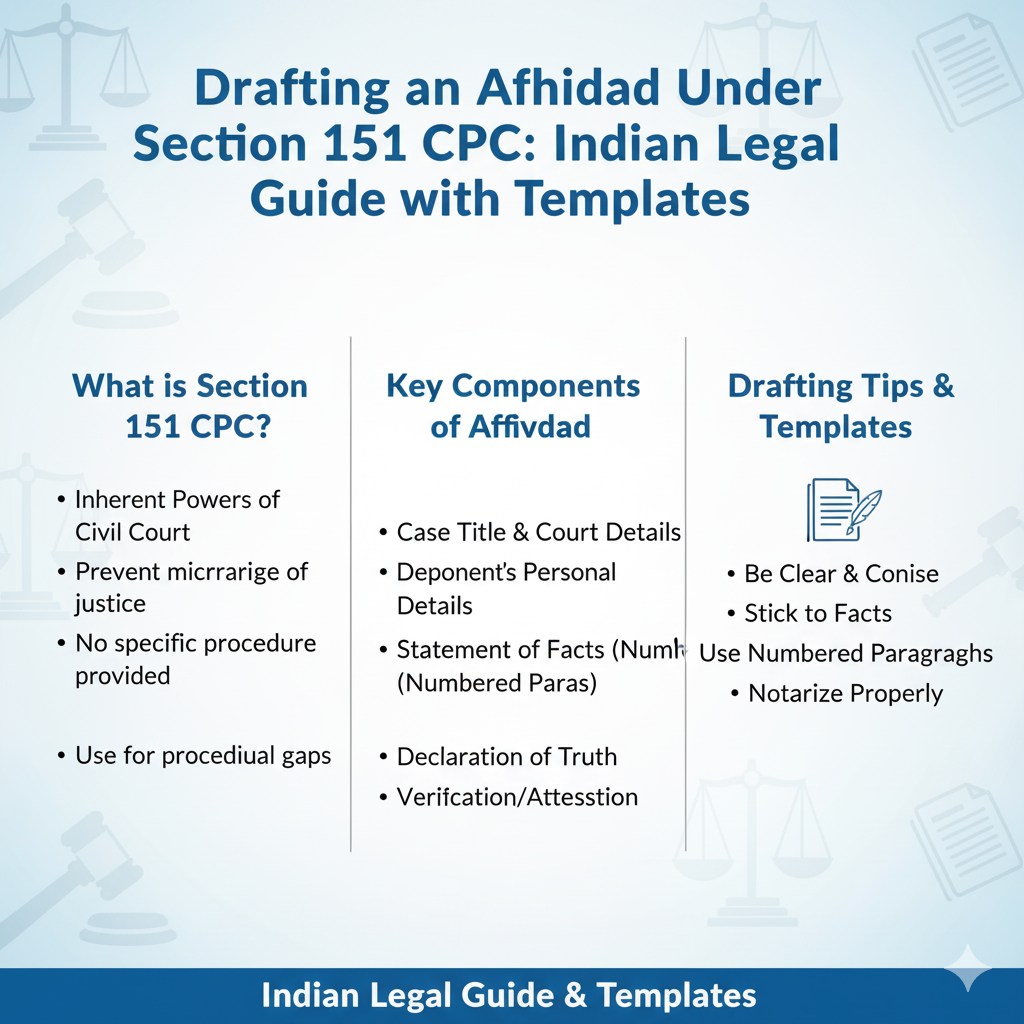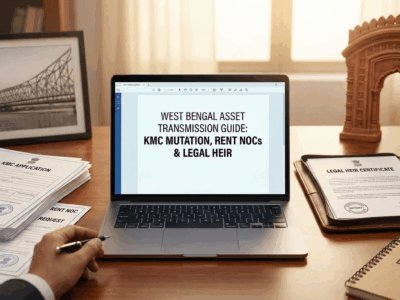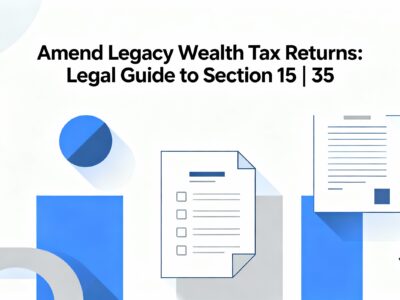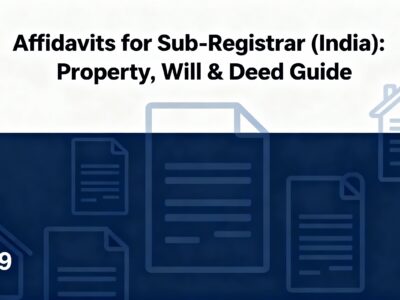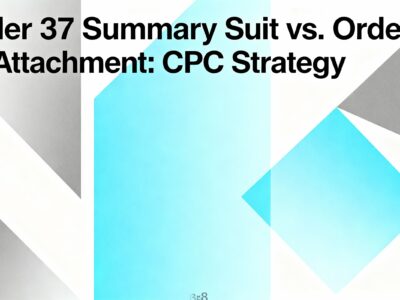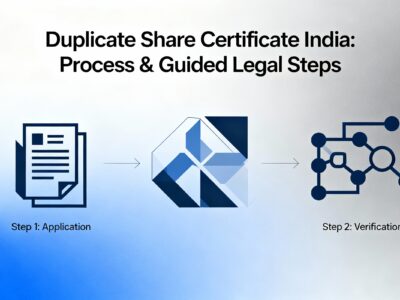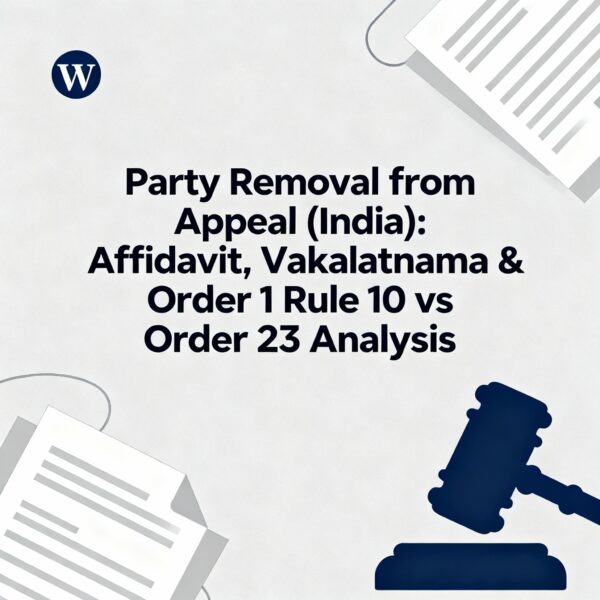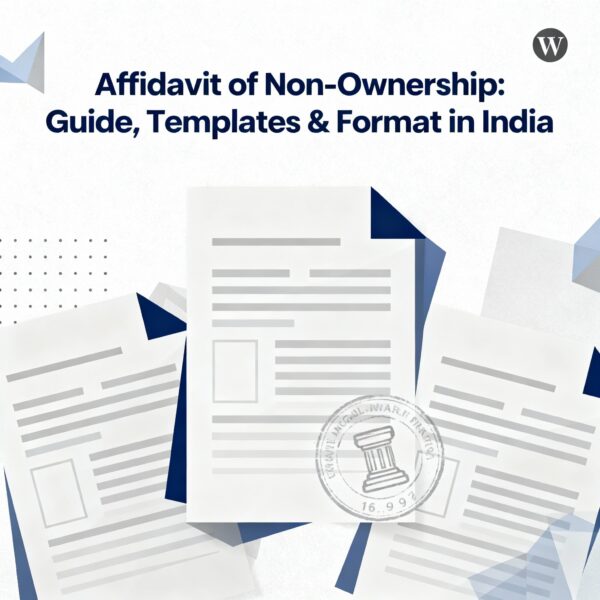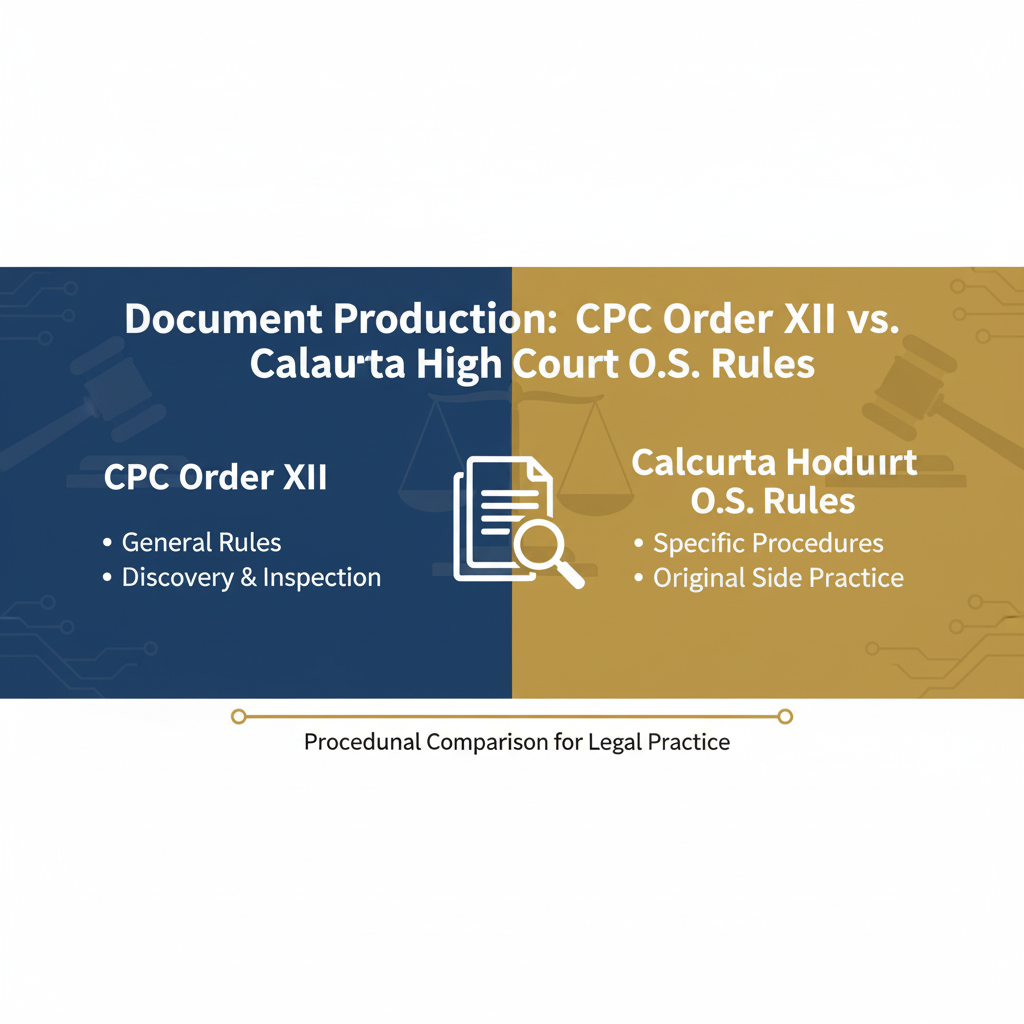Navigating the complexities of the Code of Civil Procedure, 1908, requires a deep understanding of its nuances, especially the critical role of Section 151. This provision saves the court’s inherent powers to prevent the abuse of process and secure the ends of justice when no specific remedy exists. A meticulously drafted affidavit is the cornerstone of any successful application under this section. This comprehensive 2025 guide provides a definitive legal and practical framework for drafting a flawless affidavit under Section 151 of the C.P.C. from an Indian legal perspective. We will explore the doctrine of inherent powers, analyze landmark Supreme Court judgments, detail common drafting pitfalls, and provide annotated, multilingual templates in English, Hindi, Bengali, Tamil, Telugu, and Marathi to equip you with the knowledge needed to build a compelling case.
A Comprehensive Guide to Drafting an Affidavit Under Section 151 of C.P.C.
Your complete legal and practical handbook. Updated: October 16, 2025
Part I: The Doctrine of Inherent Powers
The Code of Civil Procedure, 1908 (C.P.C.) is an exhaustive framework, yet it cannot foresee every legal nuance. To prevent procedural rules from causing substantive injustice, Section 151 was included. It doesn't grant new powers, but rather saves the court's inherent authority to act in exceptional circumstances.
Section 151: The Uncodified Reservoir of Power
Section 151 acts as a reservoir of judicial authority, drawn upon when codified procedures are insufficient to deliver justice.
+
The court's duty to do justice (*ex debito justitiae*).
The Twin Pillars: Securing Justice and Preventing Abuse
For the Ends of Justice
A proactive and remedial power to fill legislative gaps, recall fraudulent orders, and correct procedural mistakes.
To Prevent Abuse of Process
A protective power to safeguard judicial integrity by striking out frivolous litigation and thwarting misuse of procedures.
Navigating the Procedural Labyrinth: The Rule of Exclusion
When can Section 151 be invoked?
Does a specific remedy exist in C.P.C. or another statute?
YES
You must follow the specific provision. Section 151 cannot be used.
NO
Section 151 may be invoked as a power of last resort.
Grounds for Invoking Section 151
While every case is unique, inherent powers are often exercised in specific scenarios. The chart below shows a hypothetical distribution of successful Section 151 applications based on common grounds.
Part II & III: Crafting the Affidavit
The affidavit is the factual cornerstone of your application. It's not just a formality; it's the primary evidence the court will consider. Precision, candor, and adherence to procedural rules are paramount.
Anatomy of a Strong Affidavit
- First-Person Narrative: Always use "I, [Name], do hereby solemnly affirm..."
- Numbered Paragraphs: Structure content logically, with one fact per paragraph.
- Knowledge vs. Belief: Clearly distinguish facts you know personally from information you believe to be true (and state the grounds for that belief).
- Chronological Flow: Present facts in a clear, time-based order to build a compelling case.
- Supporting Documents: Annex any evidence (e.g., medical certificates) as properly marked exhibits.
Annotated Template (English)
IN THE COURT OF THE [Court Name], [City]
Civil Suit / Miscellaneous Application No. ________ of 20__
IN THE MATTER OF:
[Full Name of 1st Petitioner] & Ors. ... Petitioner(s)
VERSUS
[Full Name of 1st Respondent] & Ors. ... Respondent(s)
AFFIDAVIT ... ON BEHALF OF THE 1ST PETITIONER
I, [Deponent's Name], son/daughter of [Father's/Husband's Name], aged about __ years, residing at [Address], do hereby solemnly affirm and declare as under:
1. That I am the 1st Petitioner... and am competent to swear this affidavit. // Establishes identity and competence.
2. That I have filed the accompanying application under Section 151... The contents of the said application... are true and correct. // Links affidavit to the main application.
3. That on [Date], this Hon'ble Court was pleased to dismiss the suit... I was unable to attend because [Provide a clear, concise, and truthful reason]. // Factual averment explaining the core issue.
4. That my counsel... was also unable to attend... The non-appearance was neither intentional nor deliberate... // Reinforces that the default was not negligent.
5. That I have a meritorious case... If the order of dismissal... is not set aside, I shall suffer irreparable loss and injury... // Addresses legal tests: prima facie case and irreparable harm.
6. That no prejudice shall be caused to the Respondents... The balance of convenience lies entirely in my favour. // Addresses the balance of convenience.
DEPONENT
VERIFICATION
Verified at [Place] on this __ day of [Month], 20__, that the contents... are true and correct...
DEPONENT
Part IV: Navigating Jurisdictional Variations
The C.P.C. provides a national framework, but High Courts have their own rules. A procedurally flawless affidavit in one state might be defective in another. Awareness of local rules is critical.
Filter High Court Rules Comparison
| Procedural Aspect | Delhi High Court | Punjab & Haryana HC | General Practice |
|---|---|---|---|
| Mandatory Filing | Required to support applications where facts are to be proved. | Mandatory for any assertion of fact contrary to or outside the record. | Standard practice to file a supporting affidavit with every interlocutory application. |
| Consequence of Non-Filing | The application may be dismissed for lack of evidence. | The court may order the specific ground to be struck out or amended. | Court will not take cognizance of unsupported factual assertions. |
| Service on Opposing Party | Governed by general rules of service for pleadings. | Copy must be served by 12 noon on the day preceding the hearing. | Must be served a reasonable time before the hearing. |
| Special Provisions | Specific rules for Pardahnashin women and illiterate persons. | Refers to detailed attestation procedures in Vol IV of its rules. | Most rules protect illiterate deponents by requiring the affidavit to be read over. |
Part V: Multilingual Legal Templates
Accurate translation is crucial in legal drafting. Below are affidavit templates in several major Indian languages, ensuring compliance and clarity across jurisdictions.
AFFIDAVIT ... ON BEHALF OF THE 1ST PETITIONER
I, ____, son/daughter/wife of ____, aged about ____ years, by occupation ____, residing at ____, do hereby solemnly affirm and declare as under:
1. That I am the 1st Petitioner in the above-captioned matter...
2. That I have filed the accompanying application under Section 151 of the Code of Civil Procedure, 1908...
3. That [Narrate the facts justifying the application]...
4. That [Continue narrating the facts chronologically]...
5. That I have a meritorious case, and if the relief sought is not granted, I shall suffer irreparable loss and injury...
6. That the balance of convenience lies in my favour...
DEPONENT
VERIFICATION
...Part VI: Practitioner's Recommendations
Strategic Checklist Before Filing
- ✔ Exhaustion of Remedies: Have all specific provisions in the C.P.C. been ruled out? Is this truly the only available remedy?
- ✔ Genuine Injustice: Do the facts present a clear, compelling case of injustice or abuse of process, not just mere inconvenience?
- ✔ Clarity of Narrative: Can the facts be presented clearly and persuasively? Vague claims will fail.
- ✔ Procedural Perfection: Is the affidavit compliant with the specific High Court rules for format, verification, and attestation?
Part VII: Landmark Case Law Analysis
Judicial precedents have shaped the interpretation and application of Section 151. Understanding these landmark judgments is essential for any practitioner relying on the court's inherent powers.
Manohar Lal Chopra v. Rai Bahadur Rao Raja Seth Hiralal
Supreme Court of India
Principle Established: The Supreme Court affirmed that inherent powers are not granted by the Code but are inherent to the court's existence. It clarified that these powers are to be exercised in situations not covered by express provisions, ensuring that courts can render complete justice.
K.K. Velusamy v. N. Palanisamy
Supreme Court of India
Principle Established: The Court outlined the scope of Section 151, stating it can be used for procedural review, recalling orders, and correcting mistakes. It stressed that this power is complementary to specific provisions and must be exercised with caution and only in the interest of justice.
Vinod Kumar v. State of U.P.
Allahabad High Court
Principle Established: This case highlights the "abuse of process" doctrine. The court held that inherent powers can be invoked to quash proceedings that are frivolous, vexatious, or initiated with mala fide intentions, thereby protecting the integrity of the judicial system.
Part VIII: Common Drafting Pitfalls to Avoid
A well-intentioned application can be fatally undermined by a poorly drafted affidavit. Here are common mistakes that can lead to dismissal.
Vague and General Averments
Avoid phrases like "for reasons beyond my control." Be specific. Instead of "I was unwell," state "I was suffering from viral fever and was medically advised complete bed rest," and annex a medical certificate.
Concealing Material Facts
The duty of a deponent is to approach the court with clean hands. Any attempt to suppress or misrepresent facts, if discovered, will lead to immediate dismissal and may invite penalties for perjury.
Improper Verification
The verification clause is not a mere formality. Failing to state which paragraphs are true to knowledge and which are true to belief (and the grounds thereof) can render the entire affidavit invalid.
Making Legal Arguments
An affidavit is for stating facts, not for arguing the law. Legal submissions should be reserved for the main application or oral arguments. Confine the affidavit to a factual narrative only.
Part IX: Procedural Lifecycle of a Sec 151 Application
Understanding the journey of your application from filing to final order is crucial for managing expectations and preparing for the next steps.
Drafting
Prepare the Application U/s 151 and the supporting Affidavit.
Filing & Service
File in the court registry and serve a copy on the opposing counsel.
Hearing
The Court hears arguments from both sides on the application's merits.
Order
The Court passes an order, either allowing or dismissing the application.
Part X: Section 151 vs. Other Provisions
It's important to distinguish the general, inherent power of Section 151 from other specific powers granted by the C.P.C.
| Aspect | Section 151 (Inherent Power) | Order 39 (Injunctions) | Section 94 (Supplemental) |
|---|---|---|---|
| Source of Power | Inherent to the Court | Expressly granted by the Code | Expressly granted by the Code |
| Nature | General, residuary, procedural | Specific, substantive relief | Specific, to prevent injustice during pendency |
| When Used | When no other remedy exists | To prevent specific actions like waste or alienation of property | For specific reliefs like arrest, attachment before judgment |
Part XI: Frequently Asked Questions (FAQs)
Q: Can a Section 151 application be filed to bypass a specific limitation period?
A: No. Inherent powers cannot be used to override express provisions of law, including the Limitation Act. If a specific remedy is time-barred, you cannot use Section 151 as a backdoor to revive it.
Q: What is the difference between an affidavit and a pleading?
A: A pleading (like a plaint or written statement) contains the material propositions of fact that form a party's case. An affidavit is a sworn statement of evidence used to prove those facts, especially in interlocutory applications.
Q: Can the court act under Section 151 on its own motion (suo motu)?
A: Yes. Since the power is inherent to the court for the purpose of administering justice, it can act suo motu without an application from a party if it observes a manifest injustice or abuse of its process.
Q: Is an order passed under Section 151 appealable?
A: Generally, orders passed under Section 151 are not appealable as they are not listed under Section 104 or Order 43 of the C.P.C. However, they may be challenged under the revisional jurisdiction of the High Court (Section 115) or through a writ petition under Article 227 of the Constitution.

